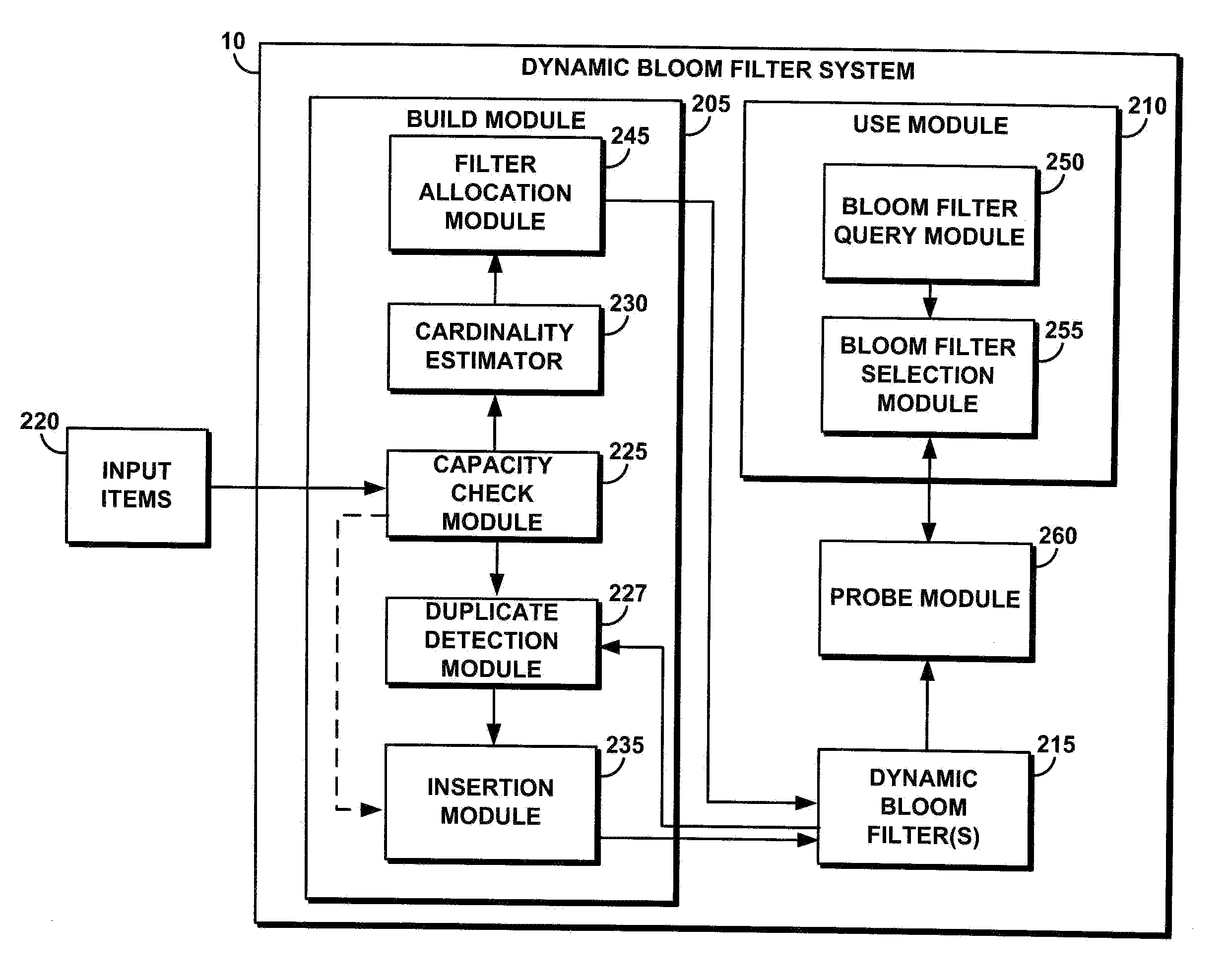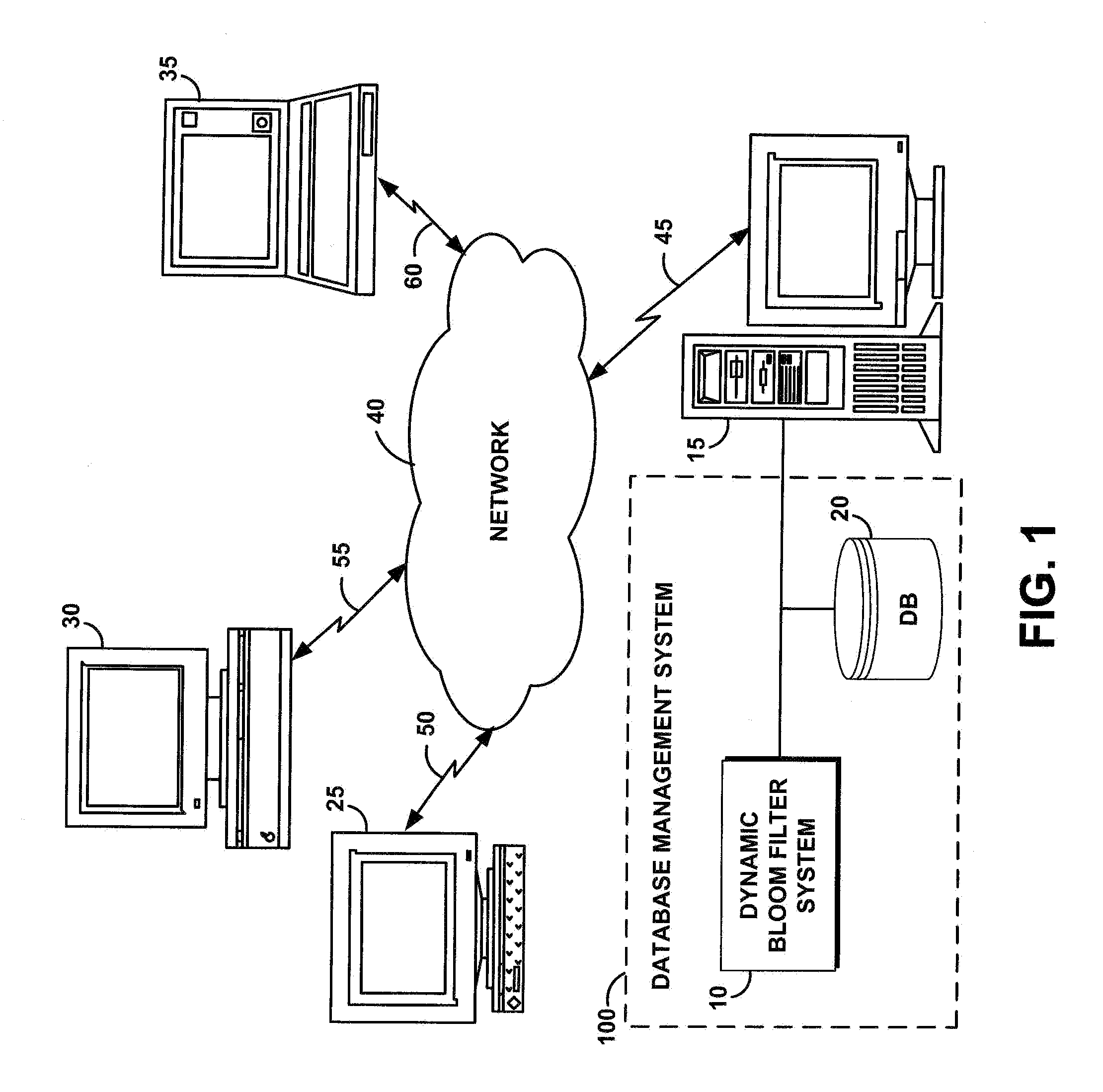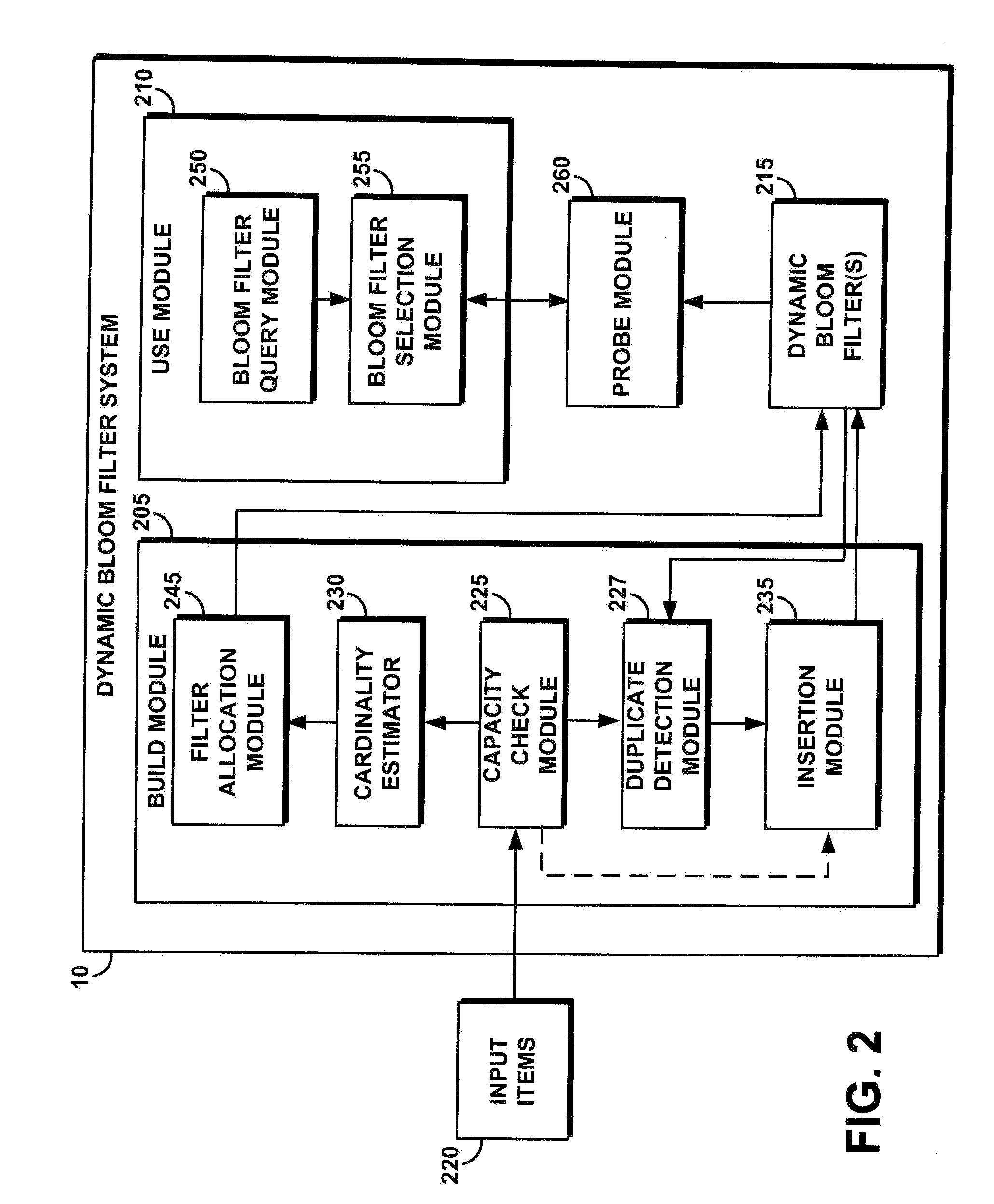System and method for generating and using a dynamic blood filter
a filter and dynamic technology, applied in the field of data structures, can solve the problems of inefficient use of memory, and unknown keys, and achieve the effect of reducing the amount of memory consumed and the time spent searching
- Summary
- Abstract
- Description
- Claims
- Application Information
AI Technical Summary
Benefits of technology
Problems solved by technology
Method used
Image
Examples
Embodiment Construction
[0028]FIG. 1 portrays an exemplary overall environment in which a system, a computer program product, and an associated method (the dynamic Bloom filter system 10 or the “system 10”) for generating and using a dynamic Bloom filter according to the present invention may be used. System 10 comprises a software programming code or a computer program product that is typically embedded within, or installed on a server 15. Alternatively, system 10 can be saved on a suitable storage medium such as a diskette, a CD, a hard drive, or like devices.
[0029]System 10 can take the form of an entirely hardware embodiment, an entirely software embodiment or an embodiment containing both hardware and software elements. In one embodiment, system 10 is implemented in software, which includes but is not limited to firmware, resident software, microcode, etc.
[0030]Furthermore, system 10 can take the form of a computer program product accessible from a computer-usable or computer-readable medium providing...
PUM
 Login to View More
Login to View More Abstract
Description
Claims
Application Information
 Login to View More
Login to View More - R&D
- Intellectual Property
- Life Sciences
- Materials
- Tech Scout
- Unparalleled Data Quality
- Higher Quality Content
- 60% Fewer Hallucinations
Browse by: Latest US Patents, China's latest patents, Technical Efficacy Thesaurus, Application Domain, Technology Topic, Popular Technical Reports.
© 2025 PatSnap. All rights reserved.Legal|Privacy policy|Modern Slavery Act Transparency Statement|Sitemap|About US| Contact US: help@patsnap.com



